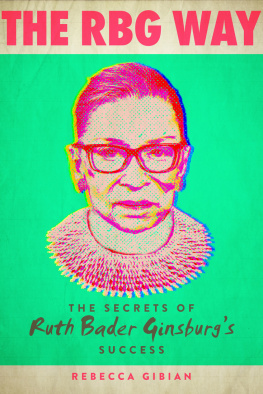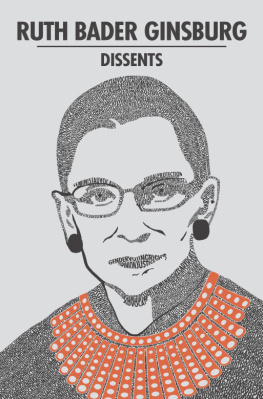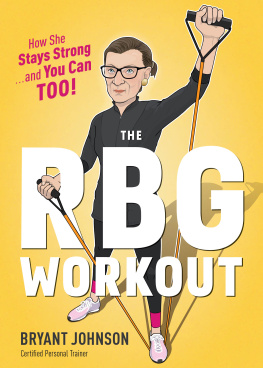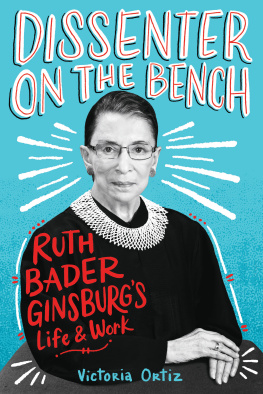

Copyright 2019 by Rebecca Gibian
All rights reserved. No part of this book may be reproduced in any manner without the express written consent of the publisher, except in the case of brief excerpts in critical reviews or articles. All inquiries should be addressed to Skyhorse Publishing, 307 West 36th Street, 11th Floor, New York, NY 10018.
Skyhorse Publishing books may be purchased in bulk at special discounts for sales promotion, corporate gifts, fund-raising, or educational purposes. Special editions can also be created to specifications. For details, contact the Special Sales Department, Skyhorse Publishing, 307 West 36th Street, 11th Floor, New York, NY 10018 or .
Skyhorse and Skyhorse Publishing are registered trademarks of Skyhorse Publishing, Inc., a Delaware corporation.
Visit our website at www.skyhorsepublishing.com.
10 9 8 7 6 5 4 3 2 1
Library of Congress Cataloging-in-Publication Data is available on file.
Cover design by Brian Peterson
ISBN: 978-1-5107-4958-0
Ebook ISBN 978-1-5107-4959-7
Printed in the United States of America
To the women who dedicate their lives to making the world a better place for those who follow
Contents
Introduction
IT IS 1959, AND TWENTY-SIX-YEAR-OLD Ruth Bader Ginsburg is having trouble getting a job. Shes already attended Harvard Law School, where she was one of only nine women seated among more than five hundred men. Now, having graduated from Columbia tied for first in her class, she was looking for a job at a law firm or as a clerk to a judge or justice.
None of her accomplishments seemed to matter to the men in charge of the legal world. She was not given an offer at Paul, Weiss, Rifkind, Wharton & Garrison, despite a successful clerkship the summer before. They already hired an African American woman, which fulfilled their commitment to diversity.
And theres no question about it: potential employers rejected her due to her gender. Despite graduating at the top of her class, being on two law reviews, and having strong recommendationsincluding one from a professor (and later dean) at Harvard Law School, Albert Martin SacksRuth Bader Ginsburg was a Jewish woman and a mother to a young toddler, which were three strikes against her. She may have accomplished a lot, on top of seeing her husband through his first bout of cancer, but she just couldnt get a job.

Lets jump forward to 2018, when I, a twenty-seven-year-old journalist, am eating cheesecake from a box and drinking ros out of a thermos my roommate and I smuggled into a crowded movie theater in Brooklyn, watching a documentary on the now-notorious RBG. Not only did she find a job, but since ascending to the highest court in the land, Ruth Bader Ginsburg has become a cult icon for feminism and equality, thanks to the way she fundamentally changed American law surrounding gender bias and gender equality, and thanks to the ringing dissents she has started reading from the bench as the court has become more and more conservative. There are T-shirts, candles, coffee mugs, tote bags, and travel cups with her face on them. There has been a multitude of books about her life as a pioneer of gender equality and the law. There is
I have long admired Ruth Bader Ginsburgas shown through the candle holder and mug with her likeness on them that were gifted to me long before I started writing this book. In fact, she was so frequently a topic of inspiration and conversation among one group of friends when we lived together in Washington, DC, that no one was surprised when our smallest housemate, a young kitten, was named Ruth Bader Ginsburg (we called her Ruthie B. for short).
But last year, while sitting in the borough where RBG was born, watching her on the big screen, I wondered if there was a way for people to follow in her footsteps, no matter their career, instead of purely idolizing her. So when, a few months later, Skyhorse Publishing asked me if I would be interested in writing a book about RBGs pathway to success, it felt like someone had been reading my thoughts.
When I agreed to do this book, I knew that there were already many fantastic, well-researched, and in-depth biographies written that describe Justice Ginsburgs life, cases, and relationships, and I in no way wish to encroach on that territory. As the justice always says, I stand on the shoulders of those who came before me. Instead, this book explores the idea that there are lessons we can all take away from RBGs life and apply to our own lives to maybe become a little more successful in our relationships and careers and efforts to create change.
I spent months reading every book, article, and think piece about Ruth Bader Ginsburg that I could, as well as reading her own briefs, dissents, speeches, and talks. I watched the documentary and movie made about her life and listened to her give interviews and talks (I have seen her speak twice in person, once with the late Justice Antonin Scalia in February 2014, when the two discussed press freedoms as part of The Kalb Report. And then once in December 2018, with NPRs legal affairs correspondent Nina Totenberg). I also conducted nearly twenty interviews of Ginsburgs former law clerks, colleagues, journalists, and friends, and spoke to some of the authors who have written the biographies and books I mentioned above. While I did reach out to the justice herself multiple times, I was told via her assistant that the justice appreciates my interest, but politely declined my request to be interviewed. In all honesty, this was unsurprising; the same day I received that email, the Notorious RBG was the sole dissenter on an abortion case that had been heard by the Supreme Court that Term. As author Jane De Hart did in the preface to her extensive Ruth Bader Ginsburg biography, I will quote legal analyst Jeffrey Rosen in saying Justice Ginsburg is always everywhere and just out of reach.
The research and interviews I did focus on Ruth Bader Ginsburgs way of liferegarding what she has done, the relationships she has cultivated, and the advice she giveswith the goal of maybe giving people direct takeaways that they can use within their own lives. Throughout this book, I will reference Justice Ginsburgs own words and work, the research and books written by others, and the conversations that I had with those who know her better than me, and I will do my best to explain when a source said something directly to me, or wrote/said it elsewhere. The book is split into three sections and includes nine chapters total, because in full cheesiness, there are three branches of government and the Supreme Court is made up of nine justices (I know; Im sorry).
Of course, there is no way to fully reenact or encompass RBGs existence, but there are plenty of lessons to learn from her partnerships, her dissents, her humor, and more.
Who doesnt want to be a little more notorious in their own life?
PART I
Fighting for Equality
We should not be held back from pursuing our full talents, from contributing what we could contribute to the society, because we fit into a certain mold, because we belong to a group that historically has been the object of discrimination.
Ruth Bader Ginsburg, during a 2001 interview
On When There Are Nine
RUTH BADER GINSBURGS STOMACH FILLED with butterflies as she adjusted the microphone in front of her. The lawyer felt nauseous all morning on that cold day. Still, she managed to complete her usual exercise routine, one that she took out of the Canadian Air Force Exercise Manual, before donning her mothers jewelry and making her way to 1 First Street NE in Washington, DC. She had ten minutes.
Next page









